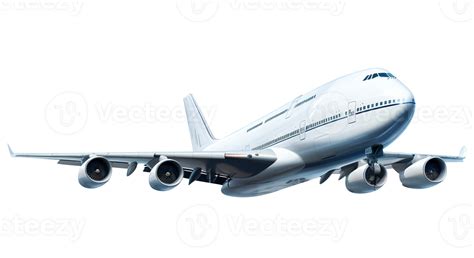
A passenger’s seemingly innocuous question about whether a flight attendant was certain of the flight path triggered a security alert aboard a recent Southwest Airlines flight from Los Angeles to Orlando, leading to a brief investigation upon landing. The incident, detailed in a recent report, underscores the heightened sensitivity surrounding aviation security.
The Southwest Airlines flight 2492, originating from Los Angeles and bound for Orlando, experienced an unexpected security scare when a passenger seated in 1B posed a question that raised concerns among the flight crew. According to reports, the passenger inquired if the flight attendant was “absolutely, positively sure” about the flight’s trajectory. This seemingly simple question prompted a series of actions, including a notification to the captain and subsequent communication with ground control, ultimately resulting in law enforcement meeting the aircraft upon arrival in Orlando. The incident highlights the delicate balance between passenger rights and the need for stringent security measures in contemporary air travel.
The sequence of events began subtly, with a casual question during the routine in-flight service. However, the specific wording and tone employed by the passenger in seat 1B were perceived as potentially threatening, leading the flight attendant to report the exchange to the captain. In turn, the captain, adhering to standard operating procedures, contacted ground control to relay the information and seek further guidance. This communication initiated a pre-emptive security protocol, ensuring that law enforcement personnel were prepared to assess the situation immediately upon the aircraft’s arrival at Orlando International Airport.
Upon landing, the aircraft was met by law enforcement officials who promptly boarded the plane to investigate the matter. The passenger in question was identified and questioned regarding the nature and intent behind their inquiry. After a thorough investigation, authorities determined that there was no credible threat, and the passenger was eventually released without any charges filed. Despite the lack of any malicious intent, the incident serves as a stark reminder of the increased vigilance and zero-tolerance approach towards potential security breaches in the aviation sector.
The incident has ignited a broader discussion about the role of passengers in maintaining aviation security and the potential for misinterpretations in high-stress environments. While passengers have the right to seek clarification and information regarding their flight, it is crucial to exercise caution and sensitivity in their interactions with flight crew members. Any ambiguity or perceived threat can trigger a cascade of security protocols, leading to delays, investigations, and unnecessary anxiety for all involved.
The Southwest Airlines incident also raises questions about the effectiveness of current security training programs for flight attendants and the guidelines for assessing potential threats in real-time. While flight crews are extensively trained to identify and respond to a wide range of security risks, the subjective nature of threat assessment means that misinterpretations can occur. Regular refresher courses and updated protocols are essential to ensure that flight crews are equipped to handle ambiguous situations effectively, minimizing disruptions while maintaining the highest levels of safety and security.
Furthermore, this occurrence highlights the importance of fostering a collaborative and communicative environment between passengers and flight crew members. By encouraging open dialogue and mutual understanding, airlines can reduce the likelihood of misunderstandings and promote a safer, more secure travel experience for everyone. Clear communication channels and proactive engagement can help alleviate anxieties and address concerns before they escalate into full-blown security incidents.
In the wake of this event, aviation security experts are calling for a comprehensive review of existing protocols and procedures to identify areas for improvement. This includes refining threat assessment guidelines, enhancing communication strategies, and providing additional training for flight crews. By addressing these critical areas, airlines can strengthen their security posture and minimize the potential for similar incidents in the future.
The incident on Southwest Airlines flight 2492 underscores the complexities and challenges of maintaining aviation security in an era of heightened vigilance. While the passenger’s question ultimately proved to be harmless, the response it triggered serves as a testament to the rigorous security measures in place and the unwavering commitment of aviation professionals to ensuring the safety and security of all passengers. By learning from this experience and implementing necessary improvements, the aviation industry can continue to evolve and adapt to the ever-changing threat landscape, protecting the skies for generations to come.
The financial implications of such incidents, even when resolved quickly, can be significant. Delays can disrupt flight schedules, leading to cascading effects across the airline’s network. There are also costs associated with the investigation itself, including the deployment of law enforcement personnel and the time spent by airline staff in addressing the situation.
Detailed Elaboration
The Southwest Airlines incident involving the passenger in seat 1B is a microcosm of the larger security apparatus that governs modern air travel. The layers of security, from pre-flight screening to in-flight monitoring, are designed to mitigate risks and ensure passenger safety. However, these systems are not infallible, and incidents like this one expose the inherent challenges of balancing security concerns with individual freedoms.
The question posed by the passenger – whether the flight attendant was “absolutely, positively sure” about the flight’s trajectory – might seem innocuous in isolation. However, in the context of post-9/11 air travel, any deviation from the norm can trigger heightened scrutiny. The flight attendant’s decision to report the question to the captain reflects the training they receive to identify and respond to potential threats. This training emphasizes a “see something, say something” approach, encouraging crew members to report any behavior that seems suspicious or out of place.
The captain’s subsequent communication with ground control further illustrates the multi-layered nature of aviation security. Ground control serves as a central hub for coordinating security responses, providing real-time information and guidance to flight crews. By relaying the passenger’s question, the captain initiated a pre-emptive security protocol, ensuring that law enforcement personnel were prepared to assess the situation upon arrival.
The fact that law enforcement met the aircraft upon landing underscores the seriousness with which potential security threats are treated. Law enforcement officers are trained to handle a wide range of security incidents, from unruly passengers to potential terrorist threats. Their presence on the tarmac served as a visible deterrent, sending a clear message that any disruptive or threatening behavior would not be tolerated.
The investigation that followed involved questioning the passenger about the nature and intent behind their inquiry. This process is designed to determine whether the passenger posed a credible threat or whether their question was simply a misunderstanding. In this case, authorities concluded that there was no malicious intent, and the passenger was released without charges.
Despite the benign outcome, the incident serves as a valuable learning experience for the aviation industry. It highlights the importance of clear communication, effective threat assessment, and ongoing training for flight crews. It also underscores the need for passengers to be mindful of their interactions with flight crew members, particularly in the current security climate.
Psychological and Sociological Impact
The psychological impact of such incidents extends beyond the immediate participants. Passengers on board the flight may have experienced anxiety and fear as a result of the security scare. The presence of law enforcement officers and the heightened security measures can create a sense of unease, even if the threat is ultimately deemed to be non-credible.
Sociologically, the incident reflects the broader anxieties and tensions that have shaped air travel in the post-9/11 era. The increased security measures, while intended to protect passengers, can also contribute to a sense of suspicion and distrust. This can erode the sense of community and cooperation that is essential for a positive travel experience.
Economic Ramifications
The economic ramifications of security incidents can be significant. Delays caused by investigations can disrupt flight schedules, leading to cascading effects across the airline’s network. This can result in lost revenue, increased operating costs, and damage to the airline’s reputation.
There are also costs associated with the investigation itself, including the deployment of law enforcement personnel, the time spent by airline staff in addressing the situation, and potential legal fees. While these costs may be relatively small in the context of a single incident, they can accumulate over time and have a significant impact on the airline’s bottom line.
Comparative Analysis
Incidents similar to the Southwest Airlines event have occurred on other flights, highlighting the widespread nature of security concerns in the aviation industry. A comparative analysis of these incidents reveals common themes and challenges, including the subjectivity of threat assessment, the importance of clear communication, and the need for ongoing training.
For example, incidents involving passengers making jokes about bombs or terrorism have resulted in similar security responses, including flight diversions, investigations, and arrests. These incidents underscore the importance of being mindful of one’s words and actions while traveling, as even seemingly harmless remarks can have serious consequences.
Regulatory and Legal Considerations
Aviation security is governed by a complex web of regulations and laws, both at the national and international levels. These regulations are designed to ensure the safety and security of passengers and crew members, and they cover a wide range of issues, including passenger screening, baggage handling, and aircraft security.
Airlines are required to comply with these regulations, and they face significant penalties for non-compliance. These penalties can include fines, loss of operating licenses, and criminal charges. In addition to regulatory requirements, airlines are also subject to legal liability for security incidents that result in injuries or damages. Passengers who are injured as a result of a security breach may be able to sue the airline for negligence.
Technological Innovations
Technological innovations are playing an increasingly important role in aviation security. Advanced screening technologies, such as body scanners and explosive detection systems, are used to detect potential threats before they can board an aircraft. These technologies are constantly evolving to improve their accuracy and efficiency.
Artificial intelligence (AI) and machine learning (ML) are also being used to enhance aviation security. AI and ML algorithms can analyze large amounts of data to identify patterns and anomalies that may indicate a potential threat. These technologies can be used to improve passenger screening, baggage handling, and threat assessment.
Future Trends
The future of aviation security is likely to be shaped by several key trends, including the increasing use of technology, the growing threat of cyberattacks, and the need for greater collaboration between airlines, governments, and law enforcement agencies.
Technological innovations, such as biometric identification and advanced threat detection systems, will play an increasingly important role in enhancing aviation security. These technologies will help to automate security processes, reduce human error, and improve the detection of potential threats.
The growing threat of cyberattacks poses a significant challenge to aviation security. Cyberattacks can disrupt flight operations, compromise passenger data, and even take control of aircraft systems. Airlines and governments must work together to develop robust cybersecurity defenses to protect against these threats.
Greater collaboration between airlines, governments, and law enforcement agencies is essential for effective aviation security. By sharing information and coordinating their efforts, these stakeholders can improve their ability to detect and respond to potential threats.
Conclusion
The Southwest Airlines incident serves as a reminder of the ongoing challenges and complexities of maintaining aviation security. While the passenger’s question ultimately proved to be harmless, the response it triggered underscores the importance of vigilance, clear communication, and ongoing training. By learning from this experience and implementing necessary improvements, the aviation industry can continue to evolve and adapt to the ever-changing threat landscape, protecting the skies for generations to come. The balance between security and individual freedoms will continue to be a delicate one, requiring constant evaluation and adaptation to ensure the safety and comfort of all travelers. Open communication, coupled with advanced technology, represents the best path forward in securing the future of air travel.
Frequently Asked Questions (FAQ)
1. What exactly happened on Southwest Airlines flight 2492?
A passenger in seat 1B asked a flight attendant if they were “absolutely, positively sure” about the flight’s trajectory. This question was perceived as potentially threatening, leading the flight attendant to report it to the captain, who then contacted ground control. Upon landing in Orlando, law enforcement met the plane and questioned the passenger.
2. Why did a simple question cause such a significant response?
In the post-9/11 era, aviation security operates under a heightened state of vigilance. Any deviation from the norm or perceived ambiguity can trigger security protocols. The flight attendant was likely acting in accordance with their training to report any potentially suspicious behavior. The specific wording (“absolutely, positively sure”) might have contributed to the concern.
3. Was the passenger arrested or charged with anything?
No, the passenger was not arrested or charged. After questioning, authorities determined that there was no credible threat and released the passenger.
4. What does this incident say about the state of aviation security today?
The incident highlights the increased sensitivity surrounding aviation security and the rigorous measures in place to ensure passenger safety. It also underscores the importance of clear communication and the potential for misinterpretations in high-stress environments.
5. What can passengers do to avoid causing similar misunderstandings in the future?
Passengers should be mindful of their words and actions when interacting with flight crew members. Avoid making ambiguous or potentially threatening statements, even in jest. If you have a legitimate question or concern, express it clearly and respectfully. Open communication and a collaborative approach can help prevent misunderstandings and promote a safer travel experience.









